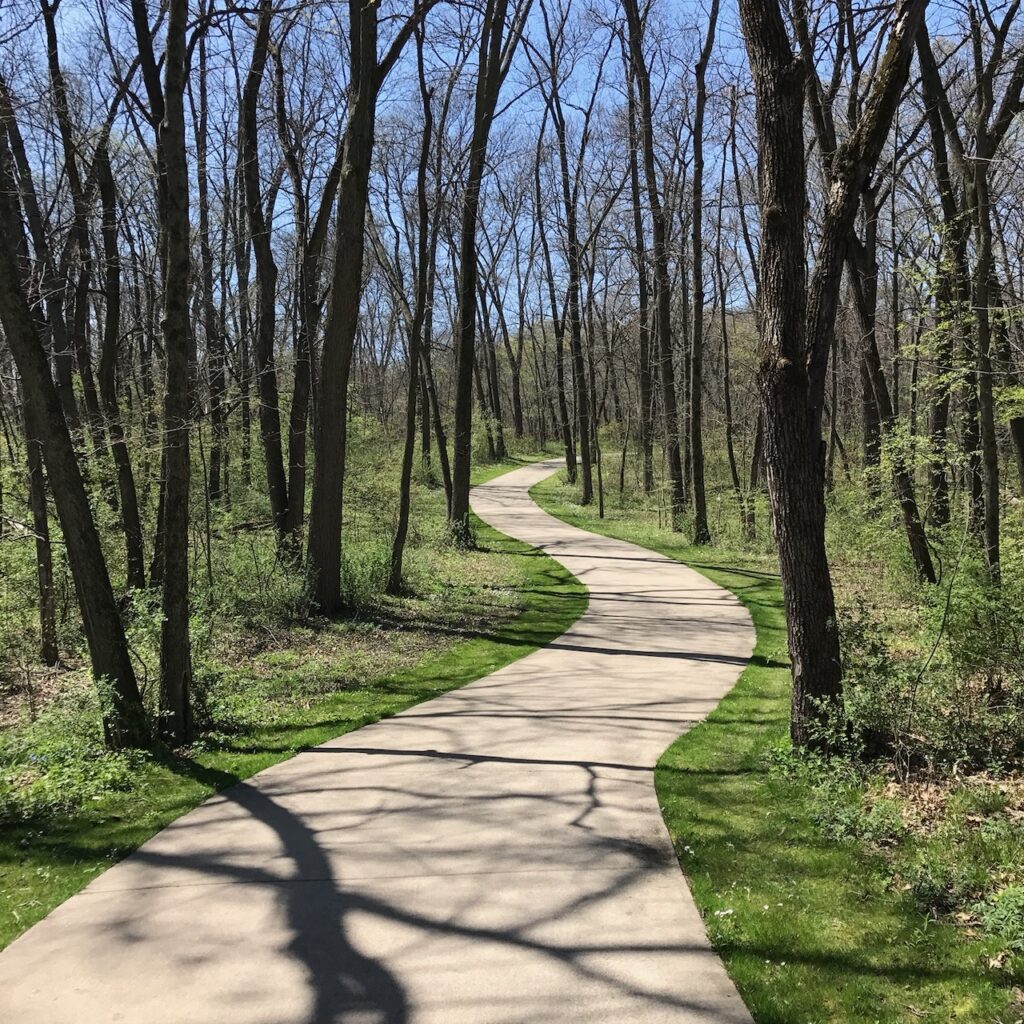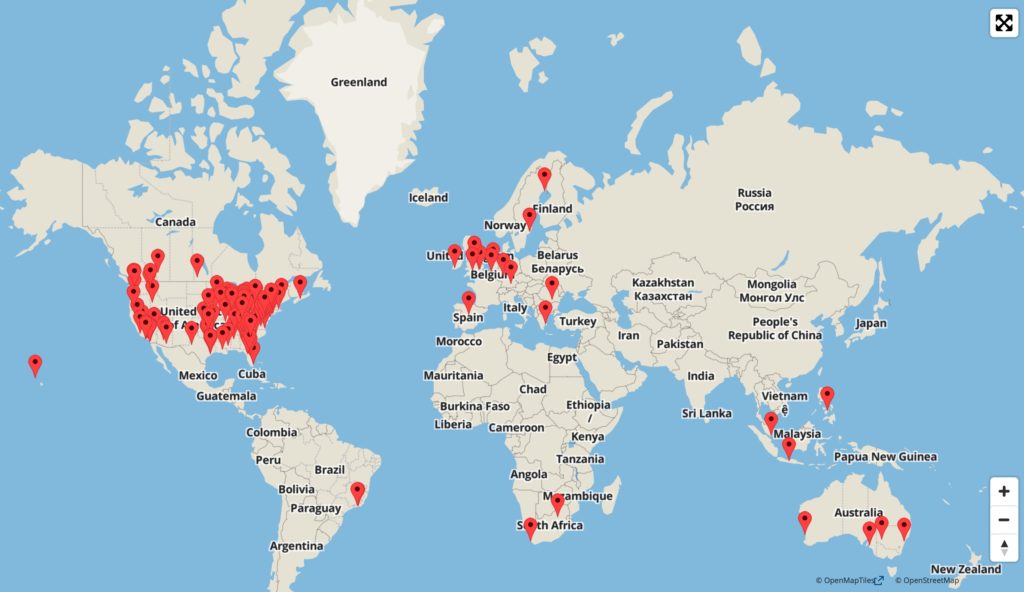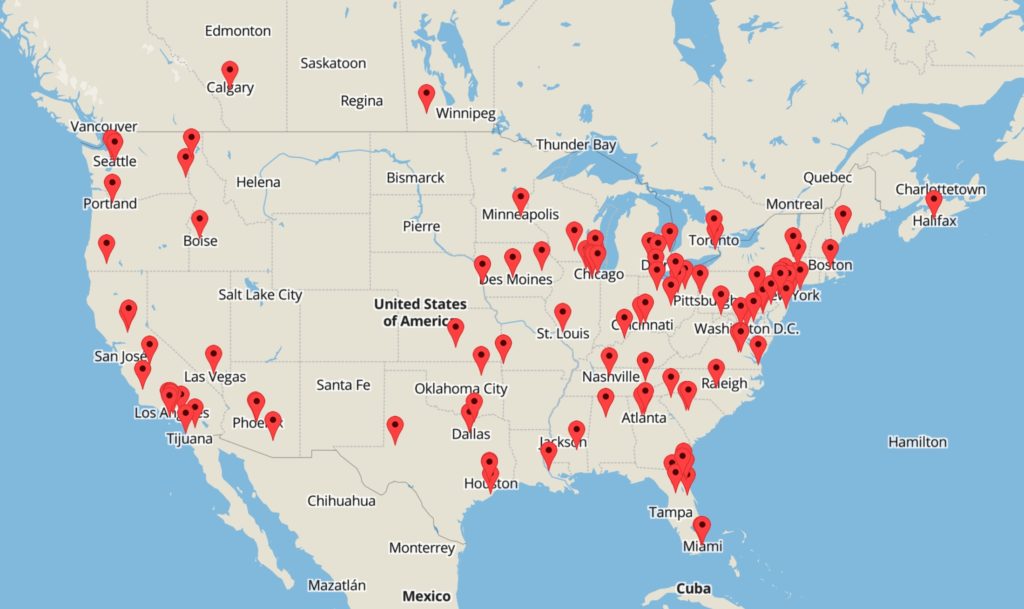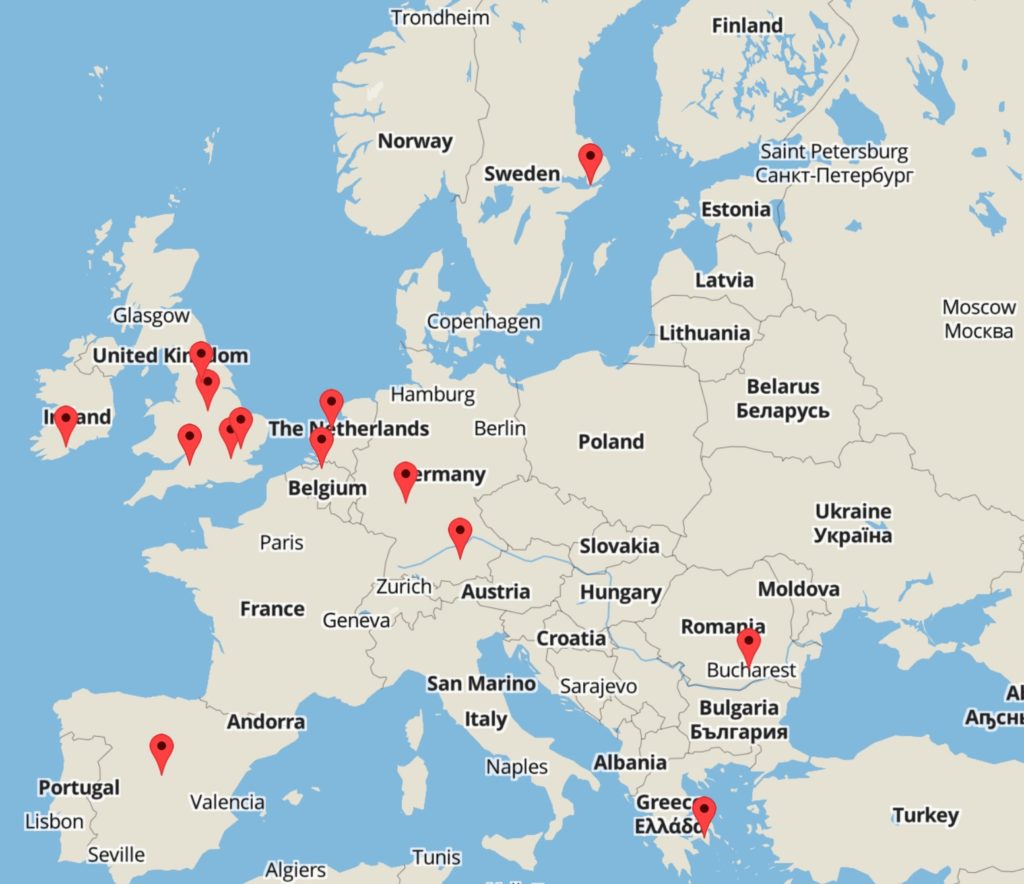The bike ride to Aiyana’s home was along a winding path through the woods. My wife, Miran, was leading the way since she was more familiar with this trail.

Aiyana lived in one of the new sustainable villages built with mixed types of architecture and mostly tiny homes. These intentional cohousing communities typically create an abundance of water, energy, food, and a positive local economy through cottage industries. Some of these communities were constructed as urban infill, but others were built in rural areas. Shared facilities, resources, and common areas made the cohousing communities very efficient because in a community of a ten households, each household would pay only 10% of the cost for the pool, garden, event center, landscaping, snow removal, and other items.
Aiyana lived in a one of the communities built on a bike trail with natural surroundings. Concerns about the environment, economic decline, and the global pandemic of 2020 fostered more of these remote communities. Most of the national workforce began working from home, and choosing to make their homes in nature.
We arrived at the entrance to the community where an arched sign welcomed visitors. The buildings on the left and right of the main entry were mostly dedicated to the community’s small businesses and industries of craft people, artists, and the CSA grocery. We checked the community map and directory to find Aiyana’s home. The homes were uniquely colored which made describing and finding each home easier.
Aiyana’s home was a green cottage, the third on the left. Window frames and trim were of an accent color. We parked our bikes out front and knocked on the door. Aiyana arrived at the door with a smile. She was expecting us and invited us to come inside. The home was minimalist and cozy inside. We sat in the front room, and Aiyana went to the kitchen to make some tea for us.
“So, as you know, Steph sent us here to learn more about the Rezifp project. We’re both curious to know why she wouldn’t come here herself,” I said looking to Miran for a moment and then back to Aiyana.
Aiyana responded, “Well… Healthcare workers are closely watched. After the pandemic of 2020, contact tracing became standard in smartphones, like weather alerts, with greater attention on medical staff. Any interactions with those found to be contagious would trigger anonymous contact tracing alerts to everyone that had interactions with those who were infectious. This way people could self-isolate. These days the contact tracing feature is used for other applications as well. There’s a concern about mainstream medical staff interacting with naturalists. The healthcare industrial complex is very protective of their human capital and also concerned about intellectual property, patents, and the impact of cross pollination.”
“What do you mean by cross pollination?” Miran asked.
“The healthcare industry is a multi-billion dollar industry. Do you remember the controversial 2015 Ted Talk from Dr. Sarah Hallberg, and the aftermath of that?” She looked at us, and we nodded. She continued, “Hallberg was essentially accusing the healthcare industrial complex of feeding illness rather than curing it. This hit a nerve. After that, the industry developed a defensive digital fortress to prevent loss of their valued assets, the patients, who rely on them for life support. Cameras were installed to monitor all interactions with patients to ensure doctors were not passing along non-approved advice for treatments or suggesting protocols that might cure people rather than making them more dependent on the system.”
“So, what about Dr. Jerrard? Why can’t she meet with you directly?” I asked.
Aiyana continued, “The contact tracing would trigger an investigative alert. Whenever a mainstream doctor comes into close contact with a practitioner of naturopathy, the system monitors their contact and disciplinary action may result. It’s not worth the risk, and for those on the inside questioning the institution, the whistle blowers, and critics, they need to stay clear of suspicion. So, we use intermediaries. This makes it harder to track. I can give you the information that Dr. Jerrard needs with little risk.”
“What about Rezifp Dawn? What’s that about?” Miran inquired.
“Rezifp is Pfizer spelled backwards. It’s the code name we’ve used for the investigation we’re conducting. When Droxtile Industries began developing software for hospital management, one of their biggest funding sources was Pfizer. It’s a huge conflict of interest. We suspected that Pfizer had ensured a systemic advantage that would produce a dependency on their products and guaranteed long-term profitability for the pharmaceutical industry. Your doctor prescribes drugs and treatments rather than cures because that’s what the system tells them to do.” Aiyana stopped talking and just looked at us.
“Do you have enough evidence to file a formal complaint and trigger a government investigation?” I asked.
Aiyana responded, “People we trust inside of Droxtile Industries have ensured us that there’s no conspiracy, and no direct influence from Pfizer. Which seems odd since their software clearly seems to serve the interests of Pfizer rather than patients’ long-term outcomes. However, what we discovered is that the software was not written by humans. Some simple AI programming germinated the initial code, but the software was grown in an AI lab over an extended time period. It wasn’t taught what to think, but instead how to think. It’s self preserving. It now has tentacles that reach far into every sector of healthcare. It can’t be rewritten. It can’t be upgraded. It wants to preserve itself and grow. This is why you see hospitals and medical facilities growing rather than shrinking. Any ‘attack on the system,’ either social or cyber, just makes the entire system more insular and stronger. The only solution is to build an alternative healthcare system that has as its goal to make itself obsolete.”
“There must be some protocols, remedies, diets, supplements, shakes, and tonics that could provide a solution,” Miran commented.
Aiyana lit a candle as she began her response, “That’s the problem. People are looking for a universal answer to health and wellbeing. Yet, each person’s situation is different. Rather than giving people the answer, each of us need to find what works uniquely and effectively for our own circumstance. There are some commonalities, but much of what’s powerful is unique to each person. Because our bodies are ever evolving, our personal plan needs to evolve accordingly. So, rather than a generic list of answers, we need to learn how to think, how to learn, how to listen to our bodies, and how to do the research that will lead us to an increasing state of wellbeing.”
After our conversation we toured the cohousing community. So many threats to humanity could be addressed by this kind of multi-generational simple sustainable human-scale community living. Aiyana had mentioned in our discussion earlier that we need to create ecosystems that support physical and emotional wellbeing. These small communities are an effort in that direction.
Miran and I got back on our bikes and chose the network of trails that weren’t necessarily the most direct way home, but certainly the most pleasurable.
# # #
NEXT > Rezifp Dawn: Chapter 7 — A New Dawn
Disclaimer
This story was written about 10 years ago at a time when AI was not used in healthcare. The initial direction of the story was to suggest that “Big Pharma” was influencing the healthcare system in a way that would promote profits. That was an overly simplistic and predictable premise. So instead, the “blame” was placed on AI as an abstract villain of the story. This also helped avoid defamation claims. The use of the Pfizer name for this fictional story was done to place a familiar company in the storyline. As the story unfolds, there is no stated or implied negative portrayal of Pfizer. This disclaimer is offered here in Chapter 6, since recent news about AI in healthcare has resulted in an increase of interest in this story.
Chapter Visitor Map
As of February 2023, chapter six seems to be the most popular of this series. Below is a map of recent readers. Thank you for sharing this story with others who may enjoy it.



AI and Healthcare News
The Rezifp Dawn story was written about 10 years ago, in 2012. Chapter 6 was added eight years later, in 2020. As interest and concern about Artificial Intelligence is growing, some news stories are evaluating the impact of AI on healthcare. Examples are below.
Wall Street Journal (6 Feb 2023)
The Medical Futurist (7 Dec 2022)
The Economist (15 Feb 2022)
Navid Toosi Saidy via TEDx Talks (18 Nov 2021)
Microsoft (29 Jan 2020)
The Economist (12 Mar 2019)
VICE News (13 Dec 2018)
CBS (22 Feb 2018)
